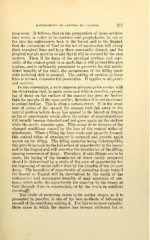Page 349 - My FlipBook
P. 349
MANAGEMENT OF CAVITIES BY CLASSES. 211
treatment. It follows, that in the preparation of these cavities,
they must, in order to be curative and prophylactic, be cut so
far into the embrasures, both to the buccal and to the lingual,
that the excursions of food in the act of mastication will sweep
their marginal lines and keep them constantly cleaned, and the
gingival margin must be so laid that it will be covered by the gum
septum. Then, if the form of the proximal surface, and espe-
cially of the contact point, is so made that it will protect this gum
septum, and is sufficiently prominent to preserve the full mesio-
distal breadth of the tooth, the permanence of the filling made
with technical skill is assured. Tbe cutting of cavities to these
lines is termed, extension for prevention. It applies to all proxi-
mal cavities.
In this connection, a very common misconception occurs with
the observation that, in many cases met with in practice, spread-
ing of decay on the surface of the enamel has gone no farther
than the margin of the open cavity ; therefore it is not necessary
to extend farther. This is often a serious error. If, in the prog-
ress of caries of the enamel, the enamel rods fall away in the
central portion before decay has spread to the buccal or lingual
as far as opportunity would allow, the colony of microorganisms
will usually become detached and not grow again on the surface
while the cavity remains open. This seems to be because of the
changed conditions caused by the loss of the central nidus of
attachment. When a filling has been made and properly formed,
this central nidus of attachment is restored and growth again
occurs on the filling. The filling material being indestructible,
this growth spreads to the full extent of opportunity to the buccal
and to the lingual and will overstep the boundaries of the filling,
causing recurrence of decay. Therefore, if safe fillings are to be
made, the laying of the boundaries of every cavity prepared
should be determined by a study of the area of opportunity for
the beginning of caries rather than by the breadth of the present
decay. The boundary of opportunity of spreading decay toward
the buccal or lingual will be determined by the depth of the
embrasures and consequent breadth of near approach of sur-
faces, which make the opportunity for cleaning by the sweep of
food through them in mastication, or by the brush in artificial
cleaning.
The study of recurring caries in its earlier stages, as it is
presented in practice, is one of the best methods of informing
oneself of the conditions causing it. For this to be most valuable,
those cases in which the enamel has become whitened but in


